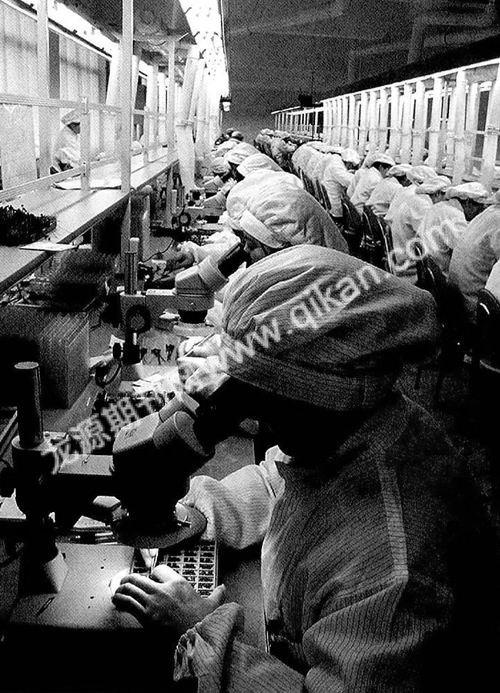The Surviving Game for Made-in-China
2009-09-30
In less than a year, many things changed. The prospect of Chinas manufacturing industry is also different. The cruel surviving game started for the manufacturing enterprises at first.
American Chamber of Commerce in Shanghai and Booz & Company made a survey on Chinas manufacturing industry in 2008-2009, whose result showed that the enterprises have no longer planned to relocate; they have seen drastic decrease in both export and domestic sales though the decreasing extent of the latter is not so large as the former; the prices of daily commodities have fallen back; the increase in the wage is no longer a problem; the number of unemployment in China has reached 20 million and more and more white collars got unemployed.

The old problems are replaced by the new ones. Some new challenges have arisen, Vice President of Booz & Company Ronald Haddock said: “Previously, the increase of cost and the appreciation of Renminbi are the major problems, but now the problems of decreasing demand, credit deflation and currency fluctuation are haunting those CEOs.”
New Crisis Comes before Old One Vanishes
The most serious problem is the decrease of export. The recession of world economy has not seen its end. The manufacturing enterprises can not forecast that the export will recover in a short time. Ed, a foreign businessman in China, agreed with this point. He has close cooperation with the Shanghai-based Atlas Corp. which purchases the décor materials of kitchen in China and exports them to the USA. What his company purchases includes the cupboard made in Shanghai, granite table made in Xiamen, stainless steel sink made in Guangzhou and vinyl floor made in Hangzhou. “Last year, I was worried about whether the cost could increase or whether the supplier could provide high-quality products,” said Ed. “But now I am only worried about the problems of sales of my customers.”
Many enterprises hope to offset the decrease of export by increasing the domestic sales. But it is not certain whether the sales in Chinas domestic market can make up the decrease of export. The domestic market of China is not as depressed as the western market, but the Chinese consumers, especially those middle class consumers, have less strong consumption will and demand than ever before.

In truth, the situation of sales is not optimistic. More than 40% of interviewed enterprises have lost 10% of their domestic sales and such a worrying phenomenon will not be changed in a short time. One third of interviewed enterprises hope to decrease the cost by 10% through re-confirming the purchasing price of materials and components. Many manufacturing enterprises in China have been closed, causing a huge number of unemployment in the coastal area of China.
However, the manufacturing enterprises based in China still consider the entry into Chinese market as their main target. The survey showed that the domestic market has become a new focus. In the latest survey, more than 77% of the interviewed enterprises said they orient their products in Chinas market because they have more opportunities to contact with the Chinese consumers in that way. Now, Chinas market plays an important role in the fields of manufacturing and sales. Most of successful enterprises have produced and sold their products in China.
Some experts thought that the economic stimulus package of China will benefit many manufacturing enterprises because the railway, highways, ports and some other public facilities will make the transportation more convenient than before once they are finished. Meanwhile, the constructions of those facilities will be helpful to develop new markets in the different places of China. But what the government needs to do is not only introduce the economic stimulus package. It has to take measures to help the enterprises to reduce the cost stress, to put more in the training of labor force and to attach more importance to education.
The recession of economy will disclose the successful and fruitful “made in China”: the successful enterprises will adopt effective ways of production when they start their production in China. A series of modern ways of management and sales will be adopted. A part of products will be exported to foreign countries while more and more products will be sold in China.
To win the heart of Chinese consumers will take some cost. “You must enlarge the categories of products if you want to survive this period when the market is in depression. In addition, you must take your best team to China,” said a CEO of a manufacturing enterprise.
The Most Difficult Problem
Though China has not seen credit crisis by now, it can not avoid the impact from the financial crisis during the period of globalization. The decreasing export, the falling production and the unemployment stress are all the problems caused by the financial crisis, the development pattern with low cost, high pollution and high energy consumption which has supported Chinas economic development for more than ten years and the industrial contradictions accumulated in these ten more years. At the same time, China economic growth has entered into an adjustment period after several years 10% growth rate.
From November 2008, the Economy and Management School of Tsinghua University has cooperated with a company to make interviews with more than 100 CEOs in China. They found that the fewer order forms, the fluctuation of raw materials prices, the capital stress, the increasing cost of human resources and the larger responsibility in environmental protection and worse ability in risk control are the main challenges the Chinese enterprises have to face.
Six Ways for “Corporate Evolution”
In order to deal with the current situation, most CEOs believe that the shifting and upgrading of the enterprises are the most effective and feasible ways. Those enterprises having good performance are also trying to seek more efficient ways of operation.
No. 1: From export to domestic sale. When the export decreases, those export-oriented enterprises have to develop the domestic market and begin to sell their products there. A general manager said: “It is difficult to increase sales in domestic market. But we have to do it in order to survive.”
According to the survey, more than 32% of the export-oriented enterprises have already begun to sell their products in domestic market. Those CEOs know that the export-oriented enterprises have certain defects in business pattern. For example, those processing enterprises depend on the foreign distribution channels, containing risks for the enterprises. The export-oriented enterprises which want to conduct domestic sales have to face great challenges, including the change of brand, distribution channels, market and after-sale service.
No. 2: From extensive operation to intensive management. Many CEOs admitted that the fast development of their companies in the past is closely tied with the development of the market. But now, the development of market is eased and the competition is more furious than ever before. The former development pattern of the enterprises wastes a lot of resources. The extensive operation is not applicable. Therefore, it is necessary for the enterprises to adopt intensive management to reach their goals. The intensive management asks the enterprises to standardize process, to strengthen management and to pay attention to details. It is helpful to decrease the cost, to improve the efficiency and to lower the risk.
No. 3: From subcontracting to self-owned brand. 90% of Chinese clothes enterprises are subcontractors. The financial crisis, appreciation of Renminbi and increase in human resource cost pushed many labor-intensive small and middle-sized clothes factories into bankruptcy. In truth, the export-oriented processing enterprises in China generally depend on the cheap labor forces. They adopt the subcontracting ways to acquire the tiny benefits. This industrial structure must be changed. To have self-owned brands is the most important.
Such a process will last long and the enterprises have little experience. They need to do a lot of things at first and all those things will cost a lot of money. But when those things are done, the profits and effect are unparalleled.
No. 4: From manufacturing to service. It has been proved that the research and design before production and the sale and logistics after production have the largest profits in the whole industry chain, while the production contains much smaller profits. If Chinas enterprises only focus on the link of production, they have to face the more and more furious homogeneous competition.
The enterprises which are only engaged in production all feel that the competition is more and more furious and the profits are smaller and smaller. Some industries in China, like home appliances industry, can only see quite small profits.
The survey showed that 52% of the CEOs have realized this problem and led the enterprises to provide service. More than 34% of the enterprises have already begun their shift and 18% of them have detailed plans to conduct the shift in the coming one or two years.
No. 5: From low end to high end. In order to improve the profit ratio of the products, the Chinese enterprises are trying to provide products and service with high added value instead of the ones with low added value. They are moving from low-end industry chain to high-end one.
The survey showed that 40% of the enterprises have already started upgrading their products; 26% of them have detailed schedule for products upgrading and 75% of them have made real measures.
No. 6: Integrate industry chains resources. The survey showed 81% of CEOs have already considered integrating the upstream and downstream resources of the industry chain. More than 30% have already begun the integration. Many CEOs have already realized that the stable cooperation in every link of industry chain is very important during the financial crisis. The best way is to integrate the industry chain. It is also an effective way for the Chinese enterprises to conduct shifting and upgrading.
